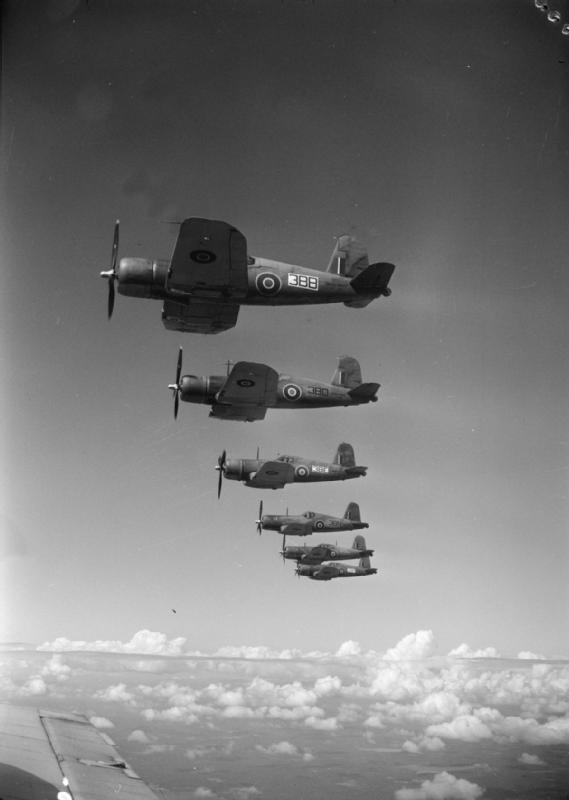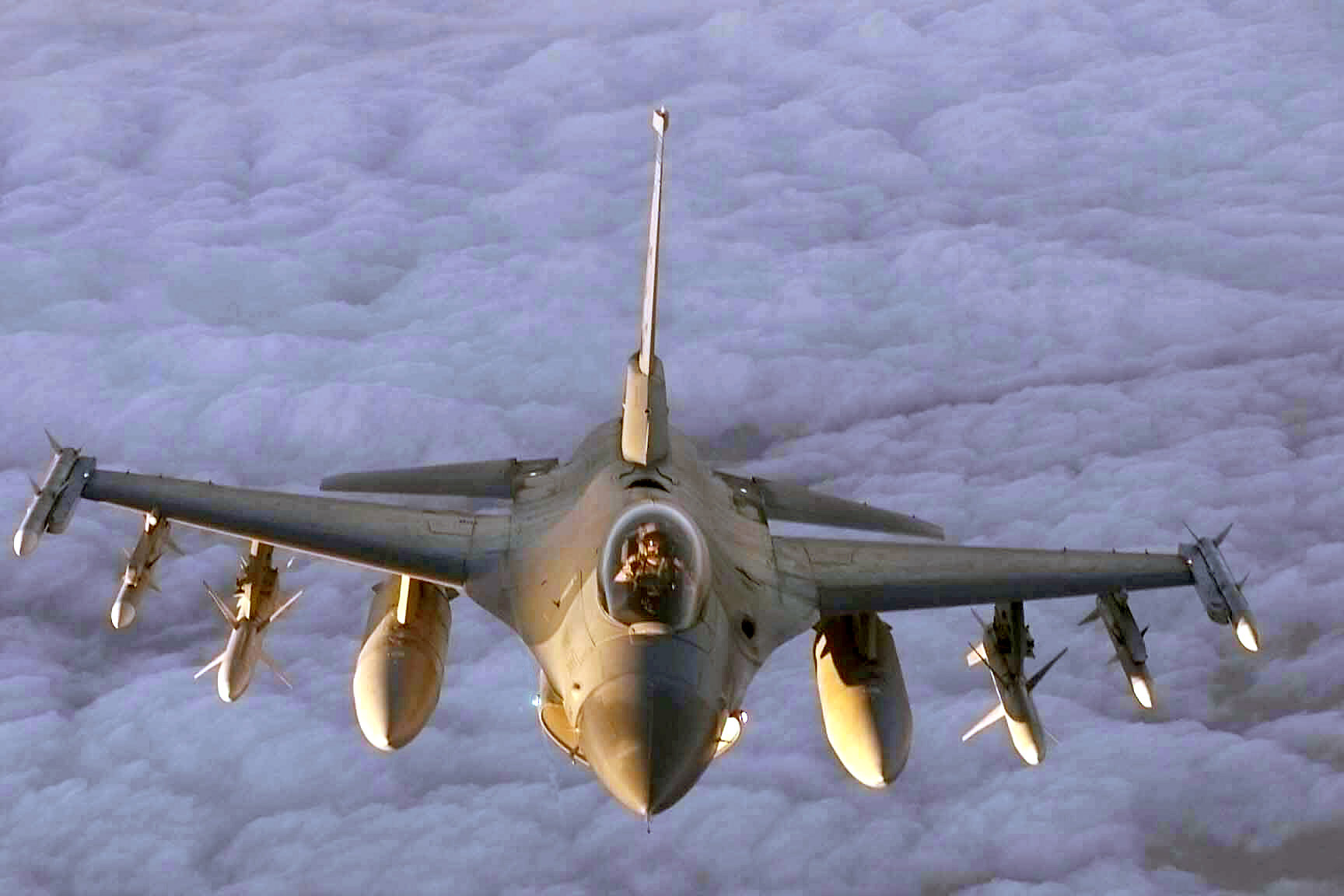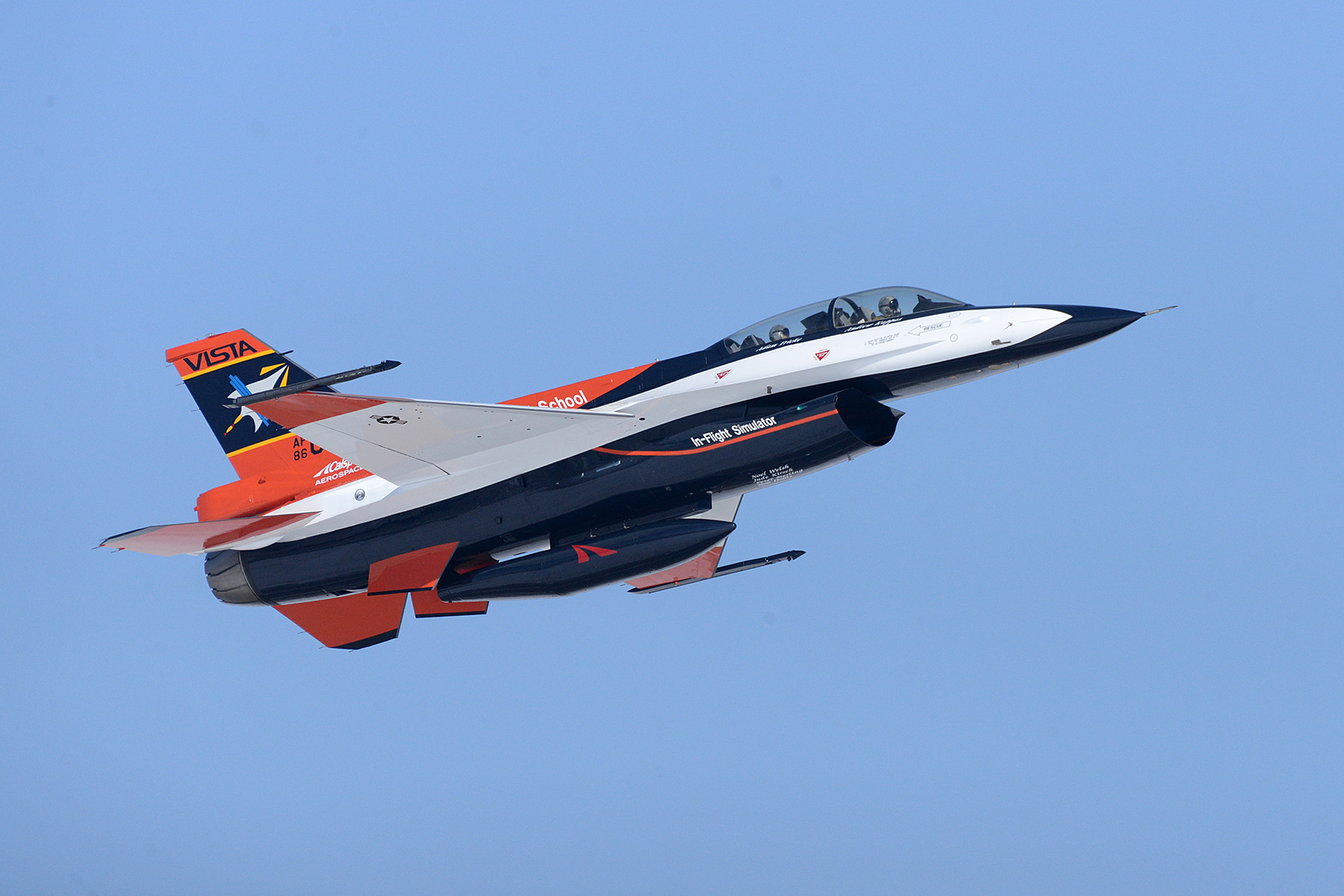|
Vought Model 1600
The Vought/General Dynamics Model 1600 series was a fighter aircraft proposal designed for the United States Navy's Navy Air Combat Fighter (NACF) program. The Model 1600 was a carrier-based derivative of the General Dynamics F-16 Fighting Falcon, but lost to the Northrop/McDonnell Douglas F/A-18 Hornet. Development Following the YF-16's victory over the Northrop YF-17 for the U.S. Air Force's ACF competition, General Dynamics decided a navalized variant could also best it in the Navy's Navy Air Combat Fighter (NACF) program. Having no carrier aircraft experience, GD teamed up with Vought (LTV Aerospace), which had designed the successful carrier-capable F-8 Crusader and A-7 Corsair II for the Navy; if selected, Vought would have produced the carrier version of the F-16.Peacock 1997, p. 54. LTV created three concepts for the navalized F-16. The main proposal was the Model 1600, which was based on the Block 10 F-16. It featured structural strengthening, an arrestor hook, an ... [...More Info...] [...Related Items...] OR: [Wikipedia] [Google] [Baidu] |
Carrier-based
Carrier-based aircraft, sometimes known as carrier-capable aircraft or carrier-borne aircraft, are naval aircraft designed for operations from aircraft carriers. They must be able to launch in a short distance and be sturdy enough to withstand the abrupt forces of launching from and recovering on a pitching deck. In addition, their wings are generally able to fold up, easing operations in tight quarters. Such aircraft are designed for many purposes including air-to-air combat, surface attack, anti-submarine warfare (ASW), search and rescue (SAR), transport (COD), weather observation, reconnaissance and airborne early warning and control (AEW&C) duties.Fred T Jane (2005). ''Jane's All the World's Aircraft''. Jane's Information Group. The term is generally applied only to fixed-wing aircraft, as naval helicopters are able to operate from a wider variety of ships, including helicopter carriers, destroyers, frigates and container ships. History The 1903 advent of fix ... [...More Info...] [...Related Items...] OR: [Wikipedia] [Google] [Baidu] |
A-7 Corsair II
The LTV A-7 Corsair II is an American carrier-capable subsonic light attack aircraft designed and manufactured by Ling-Temco-Vought (LTV). The A-7 was developed during the early 1960s as replacement for the Douglas A-4 Skyhawk. Its design was derived from the Vought F-8 Crusader; in comparison with the F-8, the A-7 is both smaller and restricted to subsonic speeds, its airframe being simpler and cheaper to produce. Following a competitive bid by Vought in response to the United States Navy's (USN) ''VAL'' (Heavier-than-air, Attack, Light) requirement, an initial contract for the type was issued on 8 February 1964. Development was rapid, first flying on 26 September 1965 and entering squadron service with the USN on 1 February 1967; by the end of that year, A-7s were being deployed overseas for the Vietnam War. Initially adopted by USN, the A-7 proved attractive to other services, soon being adopted by the United States Air Force (USAF) and the Air National Guard (ANG) to ... [...More Info...] [...Related Items...] OR: [Wikipedia] [Google] [Baidu] |
Cancelled Military Aircraft Projects Of The United States
Cancel or cancellation may refer to: * Flight cancellation and delay, not operating a scheduled flight Sociology * Cancel culture, boycott and ostracism calling out offensive behavior on social media or in real life Technology and science * Cancel leaf, a bibliographic term for replaced leaves in printed books * Cancellation property, the mathematical property if ''a''×''b'' = ''a''×''c'' then ''b'' = ''c'' ** Cancelling out, a technique for simplifying mathematical expressions * Catastrophic cancellation, numerical error arising from subtracting approximations to nearby numbers * Noise cancellation, a method for reducing unwanted sound * Phase cancellation, the effect of two waves that are out of phase with each other being summed * Cancel message, a special message used to remove Usenet articles posted to news servers * Cancel character, an indication that transmitted data are in error or are to be disregarded * Resolution rule, in propositional logic a valid inferen ... [...More Info...] [...Related Items...] OR: [Wikipedia] [Google] [Baidu] |
Vought Aircraft
Vought was the name of several related American aerospace firms. These have included, in the past, Lewis and Vought Corporation, Chance Vought, Vought-Sikorsky, LTV Aerospace (part of Ling-Temco-Vought), Vought Aircraft Companies, and Vought Aircraft Industries. The first incarnation of Vought was established by Chance M. Vought and Birdseye Lewis in 1917. In 1928, it was acquired by United Aircraft and Transport Corporation, which a few years later became United Aircraft Corporation; this was the first of many reorganizations and buyouts. During the 1920s and 1930s, Vought Aircraft and Chance Vought specialized in carrier-based aircraft for the United States Navy, by far its biggest customer. Chance Vought produced thousands of planes during World War II, including the F4U Corsair. Vought became independent again in 1954, and was purchased by Ling-Temco-Vought (LTV) in 1961. The company designed and produced a variety of planes and missiles throughout the Cold War. Vought was ... [...More Info...] [...Related Items...] OR: [Wikipedia] [Google] [Baidu] |
List Of Fighter Aircraft
This is a list of military aircraft that are primarily designed for air-to-air combat and thus does not include aircraft intended for other roles where they have some secondary air-to-air capability, such as with many ground attack aircraft. The list does not include projects that were cancelled before an aircraft was built or fictional aircraft. List , - , ACAZ C.2, , Belgium, , Two-seat fighter, , 1926, , Prototype, , , , , - , Adamoli-Cattani fighter, , Italy, , , , 1918, , Prototype, , , , , - , AD Scout, , UK, , Zeppelin interceptor, , 1915, , Prototype, , , , , - , AEG D.I, D.II & D.III, , Germany, , , , 1917, , Prototype, , , , , - , AEG Dr.I, , Germany, , , , 1917, , Prototype, , , , , - , Aerfer Ariete, , Italy, , , , 1958, , Prototype, , , , , - , Aerfer Sagittario 2, , Italy, , Lightweight fighter, , 1956, , Prototype, , , , , - , Aero Ae 02, , Czechoslovakia, , , , 1920, , Prototype, , , , , - , Aero Ae 04, , Czechoslovakia, , , , 1921, , Prototype, , , ... [...More Info...] [...Related Items...] OR: [Wikipedia] [Google] [Baidu] |
List Of Active United States Military Aircraft
Active United States military aircraft is a list of military aircraft that are used by the United States military. For aircraft no longer in service, see the list of military aircraft of the United States. Army , - ! Type ! Manufacturer ! Origin ! Propulsion ! Role ! Control ! Introduced ! data-sort-type="number" , In service ! data-sort-type="number" , Total ! Notes , - , CL-650 (ARTEMIS) , Bombardier , Canada , Jet , Intelligence, Surveillance and Reconnaissance , Manned , 2020 , 2 , 2 , modified CL-650; N488CR c/n 6140, N9191 c/n 5312 , - , C-12J , Beechcraft , USA , Propeller , Transport , Manned , 1984 , 3 , , , - , C-12 Huron , Beechcraft , USA , Propeller , Cargo/Transport , Manned , 1972 , 93 , , C-12D, C-12R, C-12U, and C-12V , - , C-41 Aviocar , CASA , Spain , Propeller , Cargo/Transport , Manned , 1974 , 5 , , , - , C-26E Metroliner , Fairchild , USA , Propeller , Cargo/Transport , Manned , 1980s , 12 , ... [...More Info...] [...Related Items...] OR: [Wikipedia] [Google] [Baidu] |
McDonnell Douglas F/A-18 Hornet
The McDonnell Douglas F/A-18 Hornet is an all-weather, twin-engine, supersonic, carrier-capable, multirole combat aircraft, designed as both a fighter and attack aircraft (hence the F/A designation). Designed by McDonnell Douglas (now part of Boeing) and Northrop (now part of Northrop Grumman), the F/A-18 was derived from the latter's YF-17 in the 1970s for use by the United States Navy and Marine Corps. The Hornet is also used by the air forces of several other nations, and formerly by the U.S. Navy's Flight Demonstration Squadron, the Blue Angels. The F/A-18 was designed to be a highly versatile aircraft due to its avionics, cockpit displays, and excellent aerodynamic characteristics, with the ability to carry a wide variety of weapons. The aircraft can perform fighter escort, fleet air defense, suppression of enemy air defenses, air interdiction, close air support, and aerial reconnaissance. Its versatility and reliability have proven it to be a valuable carrier as ... [...More Info...] [...Related Items...] OR: [Wikipedia] [Google] [Baidu] |
General Dynamics F-16XL
The General Dynamics F-16XL is a derivative of the F-16 Fighting Falcon, with a cranked-arrow delta wing. It was originally conceived as a technology demonstrator, later entered in the United States Air Force's (USAF) Enhanced Tactical Fighter (ETF) competition but lost to the F-15E Strike Eagle. Several years after the prototypes were shelved, they were turned over to NASA for additional aeronautical research. Both aircraft are currently stored at Edwards Air Force Base. Development SCAMP In 1977, the F-16XL started out as the F-16 SCAMP (Supersonic Cruise And Maneuver Prototype) at General Dynamics Fort Worth. Under the leadership of Harry Hillaker (father of the original F-16), the original goal of the program was to be a quick project to demonstrate the applicability of supersonic transport technologies to military aircraft. The big wing generated a lot of lift, and typical aerodynamic limitations of delta wings were overcome by the F-16's relaxed static stability. The ... [...More Info...] [...Related Items...] OR: [Wikipedia] [Google] [Baidu] |
General Dynamics X-62 VISTA
The General Dynamics X-62 VISTA ("Variable Stability In-flight Simulator Test Aircraft") is an experimental aircraft, derived from the F-16D Fighting Falcon, which was modified as a joint venture between General Dynamics and Calspan for use by the United States Air Force (USAF). Originally designated NF-16D, the aircraft was redesignated X-62A on 14 June 2021 as part of an upgrade to a Skyborg, with System for Autonomous Control of Simulation (SACS). X-62A remains on the curriculum of the Air Force Test Pilot School as a practice aircraft for test pilots. Design and development The NF-16D VISTA testbed aircraft incorporated a multi-axis thrust vectoring (MATV) engine nozzle that provides for more active control of the aircraft in a post-stall situation. As a result, the aircraft is supermaneuverable, retaining pitch and yaw control at angles of attack beyond which the traditional control surfaces cannot change attitude. The NF-16D VISTA is a Block 30 F-16D based on the a ... [...More Info...] [...Related Items...] OR: [Wikipedia] [Google] [Baidu] |
F-16 Agile Falcon
A large number of variants of the General Dynamics F-16 Fighting Falcon have been produced by General Dynamics, Lockheed Martin, and various licensed manufacturers. The details of the F-16 variants, along with major modification programs and derivative designs significantly influenced by the F-16, are described below. Pre-production variants YF-16 Two single-seat YF-16 prototypes were built for the Light Weight Fighter (LWF) competition. The first YF-16 was rolled out at Fort Worth on 13 December 1973 and accidentally accomplished its first flight on 21 January 1974, followed by its scheduled "first flight" on 2 February 1974. The second prototype first flew on 9 March 1974. Both YF-16 prototypes participated in the flyoff against the Northrop YF-17 prototypes, with the F-16 winning the Air Combat Fighter (ACF) competition, as the LWF program had been renamed. F-16 FSD In January 1975, the Air Force ordered eight full-scale development (FSD) F-16s – six single-seat F-16A ... [...More Info...] [...Related Items...] OR: [Wikipedia] [Google] [Baidu] |
Turbofan
The turbofan or fanjet is a type of airbreathing jet engine that is widely used in aircraft propulsion. The word "turbofan" is a portmanteau of "turbine" and "fan": the ''turbo'' portion refers to a gas turbine engine which achieves mechanical energy from combustion, and the ''fan'', a ducted fan that uses the mechanical energy from the gas turbine to force air rearwards. Thus, whereas all the air taken in by a turbojet passes through the combustion chamber and turbines, in a turbofan some of that air bypasses these components. A turbofan thus can be thought of as a turbojet being used to drive a ducted fan, with both of these contributing to the thrust. The ratio of the mass-flow of air bypassing the engine core to the mass-flow of air passing through the core is referred to as the bypass ratio. The engine produces thrust through a combination of these two portions working together; engines that use more jet thrust relative to fan thrust are known as ''low-bypass turbofans'', ... [...More Info...] [...Related Items...] OR: [Wikipedia] [Google] [Baidu] |
General Electric F101
The General Electric F101 is an afterburning turbofan jet engine. It powers the Rockwell B-1 Lancer strategic bomber fleet of the USAF. In full afterburner it produces a thrust of more than . The F101 was GE's first turbofan with an afterburner. Development The F101 was developed specifically for the Advanced Manned Strategic Aircraft, which became the B-1A. The F101 powered the four development aircraft from 1970 to 1981. The B-1A was officially cancelled in 1977. However the flight test program continued. was awarded a contract to further develop the F101-102 engine variant. This turbofan eventually powered the B-1B from 1984, entering service in 198 ...[...More Info...] [...Related Items...] OR: [Wikipedia] [Google] [Baidu] |








